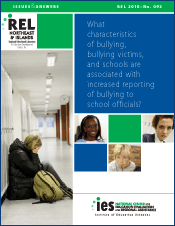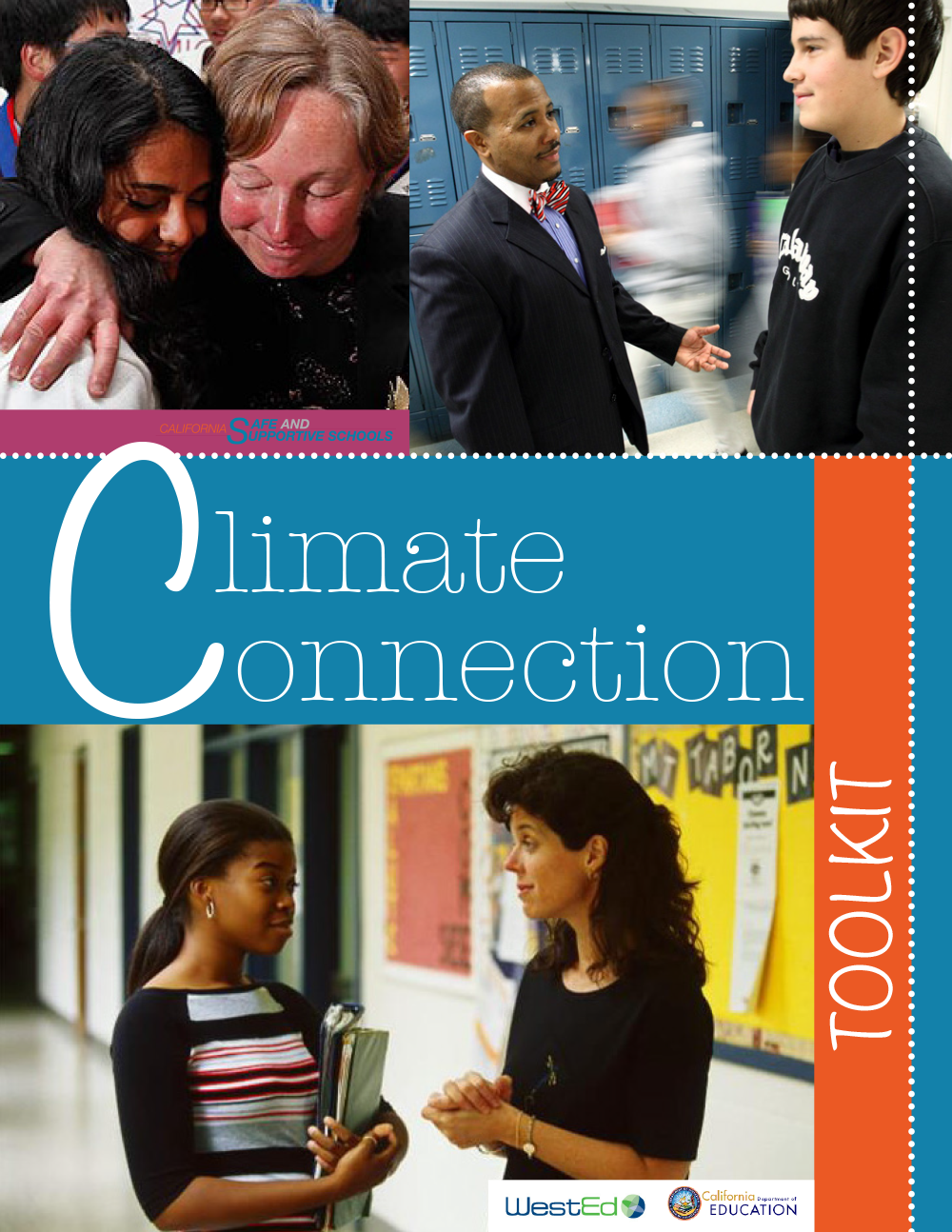Current Trends and Promising Practices in Bullying Prevention
Posted on

Written by Darius D. Taylor and Trevor A. Fronius of the WestEd Justice & Prevention Research Center (JPRC).
Students thrive in safe and supportive environments. Although rates of bullying are on the decline, incidents persist around the nation, particularly for students in rural areas, students with disabilities, and LGBTQ students. In observance of National Bullying Prevention Month, WestEd is highlighting current trends in rates of bullying, challenges to prevention, and resources for promising, evidence-based policy and practice.
The State of Bullying
The Centers for Disease Control and Prevention defines bullying as “any unwanted aggressive behavior(s) by another youth or group of youths who are not siblings or current dating partners that involves an observed or perceived power imbalance and is repeated multiple times or is highly likely to be repeated.”[i] Acts of bullying can be indirect or direct. Common forms include:
- Physical (e.g., inflicting harm)
- Verbal (e.g., threatening or name calling)
- Relational (e.g., intended isolation or spreading rumors)
- Damages to property
The good news is that overall bullying is on the decline according to the 2017 School Crime Supplement (National Center for Education Statistics and Bureau of Justice), which surveyed students ages 12–18 across the nation. Students who report being bullied has dropped by approximately 10 percent over the last 12 years, down to roughly 1 in 5 students as of 2017.
Major subgroups of students have reported less bullying experiences nationally from 2005 to 2017, including:
- Males (10% decline down to 17%)
- Females (6% decline down to 24%)
- White students (7% decline down to 23%)
- Black students (6% decline down to 23%)
- Hispanic students (6% decline down to 16%)
- Asian students (14% decline down to 7%)
- Students of two or more races (12% decline down to 23%)[ii]
Unfortunately, cyberbullying persists with reports remaining at roughly 15 percent since 2011.
In addition, youth in rural areas now experience bullying at rates nearly 65 percent higher than the national average (≈one in every three students).
Moreover, approximately 60 percent of students with disabilities reported being bullied[iii] and 33 percent of students who identify as LGBTQ reported being bullied.[iv]
Challenges and Promising Practices in Bullying Prevention
Forty years or more of research has identified several risk factors for being bullied, including gender, age, academic engagement and achievement, impulsivity, aggression and problematic behaviors, peer groups and peer connectedness, family factors, and socioeconomic status.[v] Bullying involves both socially connected and marginalized students. Finally, students involved in bullying are at a heightened propensity for co-involvement as both bully and victim.[vi]
Understanding the scope of the problem has challenged educators because:
- Most bullying goes unreported. Many students don’t tell school staff for fear of making the situation worse or being viewed as a “snitch.” Studies show that about 57 percent of bullying incidents are left unreported,[vii] and underreporting rises with increases in grade level in elementary and middle school students.
- Bullying is often unwitnessed. Bullying most often happens out of the view of teachers and other faculty, or otherwise is in a form not easily seen (e.g., cyberbullying).
The adverse consequences of bullying impact not only the victims, but the bullies themselves, bystanders, and all other stakeholders. Most experts agree that schools will not be able to punish their way out of bullying. Exclusionary discipline is viewed as an ineffective response to the issue and may even have unintended effects.[viii] While the issue requires policies and practices that are sensitive to the local context of the students, school, and community, there are some common approaches that show promise:
- Schools with stronger climate and culture have lower rates of bullying.
- Gains in social and emotional learning (SEL) skills and competencies relate to lower rates of bullying.
- Bullying is related to social status among peers. Some promising interventions target peers and bystanders to influence group behaviors and reduce bullying.[ix]
Those interested in adopting new strategies or assessing the evidence of their own current efforts should consult evidence-based registries and clearinghouses, which list promising programs that have emerged from decades of research, including:
- The U.S. Department of Justice’s Office of Juvenile Justice and Delinquency Prevention Model Programs Guide
- Blueprints for Healthy Youth Development
In addition to the resources above, WestEd offers deep knowledge and capacity to evaluate and provide technical assistance and support to those looking to address bullying and improve school climate and safety. You can learn more about these resources and WestEd work in this space through the centers and efforts listed below.
WestEd Services, Technical Assistance, and Resources
WestEd Justice & Prevention Research Center
The Center to Improve Social and Emotional Learning and School Safety
School Climate and Wellness Partnership
California Safe and Supportive Schools
Stay updated on JPRC news and events, including findings from its school climate and safety research and evaluation by signing up for the JPRC newsletter.
Darius D. Taylor is a Research Associate with the WestEd Justice & Prevention Research Center. Taylor brings to the JPRC team a sound quantitative background and passion for change within the fields of education, justice, health and social action.
Trevor A. Fronius is a Senior Research Associate with the WestEd Justice & Prevention Research Center where he serves as project director, researcher, and data manager on rigorous experimental and quasi-experimental studies in justice, school safety, violence prevention, and public health sectors.
[i] Gladden, R. M., Vivolo-Kantor, A. M., Hamburger, M. E., & Lumpkin, C. D. (2014). Bullying surveillance among youths: Uniform definitions for public health and recommended data elements, Version 1.0. Atlanta, GA: National Center for Injury Prevention and Control, Centers for Disease Control and Prevention, and U.S. Department of Education.
[ii] National Center for Education Statistics and Bureau of Justice Statistics. (2019). School crime supplement.
[iii] Bullying and harassment of students with disabilities. (2016). Retrieved from https://www.pacer.org/bullying/resources/students-with-disabilities/
[iv] Facts about bullying. (2019, June 10). Retrieved from https://www.stopbullying.gov/media/facts
[v] Farrington, D., & Baldry, A. (2010). Individual risk factors for school bullying. Journal of Aggression, Conflict and Peace Research, 2(1), 4–16.
[vi] Bradshaw, C. P., Sawyer, A. L., & O’Brennan, L. M. (2007). Bullying and peer victimization at school: Perceptual differences between students and school staff. School Psychology Review, 36(3), 361–382.
[vii] Musu-Gillette, L., Zhang, A., Wang, K., Zhang, J., & Oudekerk, B. A. (2017). Indicators of school crime and safety: 2016 (NCES 2017-064/NCJ 250650). Washington, DC: National Center for Education Statistics, U.S. Department of Education, and Bureau of Justice Statistics, Office of Justice Programs, U.S. Department of Justice. Retrieved from https://nces.ed.gov/pubs2017/2017064.pdf
[viii & ix] National Academies of Sciences, Engineering, and Medicine. (2016). Preventing bullying through science, policy, and practice. Washington, DC: The National Academies Press. https://doi.org/10.17226/23482


